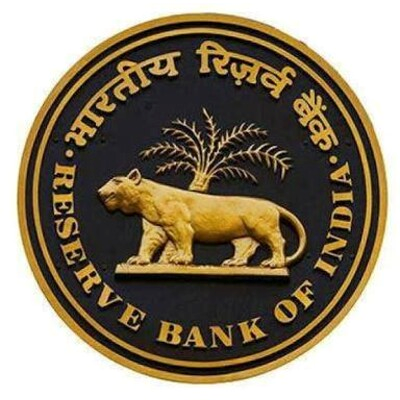The Transition of Power at the RBI: A New Era Begins
December 12, 2024, 6:21 pm
The Reserve Bank of India (RBI) stands at a crossroads. As Shaktikanta Das steps down, the baton passes to Sanjay Malhotra. This transition is not just a change in leadership; it’s a shift in strategy and vision for India’s economic future.
Das leaves behind a legacy marked by challenges and triumphs. His tenure was defined by a delicate balancing act—managing inflation while fostering growth. He often likened the economy to a tightrope walker, needing precision and balance to avoid a fall. Under his guidance, the RBI navigated turbulent waters, including high inflation and geopolitical uncertainties.
Inflation, like a shadow, loomed large during Das's term. It eroded purchasing power and stifled consumer spending. In his final address, he emphasized the need to restore the inflation-growth balance. This is not merely a monetary policy issue; it’s a matter of national economic health. High inflation is a thief, robbing citizens of their disposable income and, in turn, their confidence in the economy.
Das’s successor, Sanjay Malhotra, steps into this complex landscape. Appointed as the 26th Governor of the RBI, he brings a wealth of experience. With over three decades in various sectors, including finance and taxation, Malhotra is well-equipped to tackle the challenges ahead. His academic credentials, including a degree from IIT Kanpur and a Master’s from Princeton, add to his formidable profile.
Malhotra’s appointment signals a potential shift in focus. While Das emphasized stability, Malhotra may prioritize innovation. The RBI is already a pioneer in Central Bank Digital Currency (CBDC). Malhotra could accelerate this initiative, positioning India at the forefront of digital finance. CBDC is not just a trend; it’s the future of currency. It promises efficiency and security, much like a well-oiled machine.
The Unified Lending Interface (ULI) is another area ripe for development. This initiative aims to streamline credit delivery, especially to the underserved. Malhotra’s experience in financial services could enhance ULI’s rollout, making credit more accessible. It’s a game changer, akin to opening floodgates for economic growth.
However, the path is fraught with challenges. The global economic landscape is shifting. Geopolitical tensions and market volatility are like storm clouds on the horizon. Malhotra must navigate these turbulent waters with agility and foresight. The RBI’s monetary policy cannot be a one-size-fits-all approach. It requires a nuanced understanding of both domestic and international factors.
Cybersecurity is another pressing concern. As the digital landscape expands, so do the risks. The RBI has made strides in addressing these challenges, but the threat is ever-evolving. Malhotra will need to ensure that the RBI remains vigilant, safeguarding the financial system against potential breaches.
The relationship between the RBI and the government is another area of scrutiny. Das acknowledged that perspectives can differ. However, he maintained that internal discussions have resolved issues amicably. Malhotra must continue this collaborative spirit, ensuring that the RBI’s independence is respected while aligning with the government’s economic goals.
As Malhotra takes the helm, the focus will likely shift towards financial inclusion. Das emphasized that this is an ongoing responsibility. Malhotra must build on this foundation, ensuring that the benefits of economic growth reach all segments of society. Financial inclusion is not just a goal; it’s a necessity for sustainable development.
The RBI’s role extends beyond monetary policy. It is a guardian of financial stability. Malhotra must ensure that the banking system remains robust, capable of withstanding shocks. This requires a proactive approach to regulation and oversight.
The transition of power at the RBI is a pivotal moment. It’s a chance for renewal and innovation. Malhotra’s leadership could usher in a new era of economic resilience. The stakes are high, and the challenges are daunting. Yet, with the right vision and strategy, the RBI can navigate these waters successfully.
In conclusion, the RBI stands at a critical juncture. The departure of Shaktikanta Das marks the end of an era, but it also heralds new beginnings. Sanjay Malhotra’s appointment brings hope and potential. The path ahead is filled with challenges, but with innovation and collaboration, the RBI can chart a course towards a prosperous future. The economy is like a garden; it requires nurturing, attention, and care to flourish. As the new governor takes charge, the hope is that he will cultivate this garden wisely, ensuring it blooms for all.
Das leaves behind a legacy marked by challenges and triumphs. His tenure was defined by a delicate balancing act—managing inflation while fostering growth. He often likened the economy to a tightrope walker, needing precision and balance to avoid a fall. Under his guidance, the RBI navigated turbulent waters, including high inflation and geopolitical uncertainties.
Inflation, like a shadow, loomed large during Das's term. It eroded purchasing power and stifled consumer spending. In his final address, he emphasized the need to restore the inflation-growth balance. This is not merely a monetary policy issue; it’s a matter of national economic health. High inflation is a thief, robbing citizens of their disposable income and, in turn, their confidence in the economy.
Das’s successor, Sanjay Malhotra, steps into this complex landscape. Appointed as the 26th Governor of the RBI, he brings a wealth of experience. With over three decades in various sectors, including finance and taxation, Malhotra is well-equipped to tackle the challenges ahead. His academic credentials, including a degree from IIT Kanpur and a Master’s from Princeton, add to his formidable profile.
Malhotra’s appointment signals a potential shift in focus. While Das emphasized stability, Malhotra may prioritize innovation. The RBI is already a pioneer in Central Bank Digital Currency (CBDC). Malhotra could accelerate this initiative, positioning India at the forefront of digital finance. CBDC is not just a trend; it’s the future of currency. It promises efficiency and security, much like a well-oiled machine.
The Unified Lending Interface (ULI) is another area ripe for development. This initiative aims to streamline credit delivery, especially to the underserved. Malhotra’s experience in financial services could enhance ULI’s rollout, making credit more accessible. It’s a game changer, akin to opening floodgates for economic growth.
However, the path is fraught with challenges. The global economic landscape is shifting. Geopolitical tensions and market volatility are like storm clouds on the horizon. Malhotra must navigate these turbulent waters with agility and foresight. The RBI’s monetary policy cannot be a one-size-fits-all approach. It requires a nuanced understanding of both domestic and international factors.
Cybersecurity is another pressing concern. As the digital landscape expands, so do the risks. The RBI has made strides in addressing these challenges, but the threat is ever-evolving. Malhotra will need to ensure that the RBI remains vigilant, safeguarding the financial system against potential breaches.
The relationship between the RBI and the government is another area of scrutiny. Das acknowledged that perspectives can differ. However, he maintained that internal discussions have resolved issues amicably. Malhotra must continue this collaborative spirit, ensuring that the RBI’s independence is respected while aligning with the government’s economic goals.
As Malhotra takes the helm, the focus will likely shift towards financial inclusion. Das emphasized that this is an ongoing responsibility. Malhotra must build on this foundation, ensuring that the benefits of economic growth reach all segments of society. Financial inclusion is not just a goal; it’s a necessity for sustainable development.
The RBI’s role extends beyond monetary policy. It is a guardian of financial stability. Malhotra must ensure that the banking system remains robust, capable of withstanding shocks. This requires a proactive approach to regulation and oversight.
The transition of power at the RBI is a pivotal moment. It’s a chance for renewal and innovation. Malhotra’s leadership could usher in a new era of economic resilience. The stakes are high, and the challenges are daunting. Yet, with the right vision and strategy, the RBI can navigate these waters successfully.
In conclusion, the RBI stands at a critical juncture. The departure of Shaktikanta Das marks the end of an era, but it also heralds new beginnings. Sanjay Malhotra’s appointment brings hope and potential. The path ahead is filled with challenges, but with innovation and collaboration, the RBI can chart a course towards a prosperous future. The economy is like a garden; it requires nurturing, attention, and care to flourish. As the new governor takes charge, the hope is that he will cultivate this garden wisely, ensuring it blooms for all.

